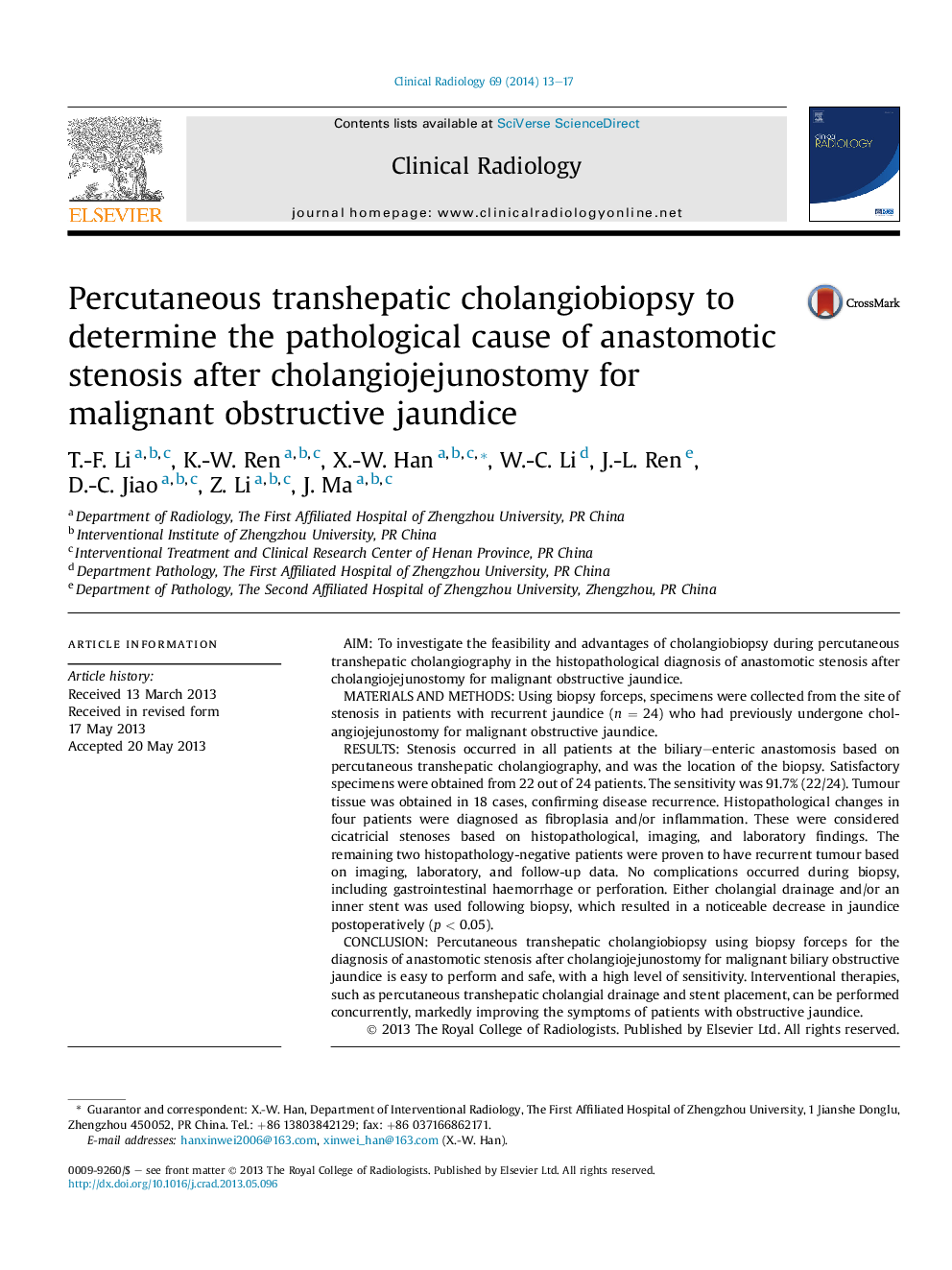| Article ID | Journal | Published Year | Pages | File Type |
|---|---|---|---|---|
| 3981704 | Clinical Radiology | 2014 | 5 Pages |
AimTo investigate the feasibility and advantages of cholangiobiopsy during percutaneous transhepatic cholangiography in the histopathological diagnosis of anastomotic stenosis after cholangiojejunostomy for malignant obstructive jaundice.Materials and methodsUsing biopsy forceps, specimens were collected from the site of stenosis in patients with recurrent jaundice (n = 24) who had previously undergone cholangiojejunostomy for malignant obstructive jaundice.ResultsStenosis occurred in all patients at the biliary–enteric anastomosis based on percutaneous transhepatic cholangiography, and was the location of the biopsy. Satisfactory specimens were obtained from 22 out of 24 patients. The sensitivity was 91.7% (22/24). Tumour tissue was obtained in 18 cases, confirming disease recurrence. Histopathological changes in four patients were diagnosed as fibroplasia and/or inflammation. These were considered cicatricial stenoses based on histopathological, imaging, and laboratory findings. The remaining two histopathology-negative patients were proven to have recurrent tumour based on imaging, laboratory, and follow-up data. No complications occurred during biopsy, including gastrointestinal haemorrhage or perforation. Either cholangial drainage and/or an inner stent was used following biopsy, which resulted in a noticeable decrease in jaundice postoperatively (p < 0.05).ConclusionPercutaneous transhepatic cholangiobiopsy using biopsy forceps for the diagnosis of anastomotic stenosis after cholangiojejunostomy for malignant biliary obstructive jaundice is easy to perform and safe, with a high level of sensitivity. Interventional therapies, such as percutaneous transhepatic cholangial drainage and stent placement, can be performed concurrently, markedly improving the symptoms of patients with obstructive jaundice.
